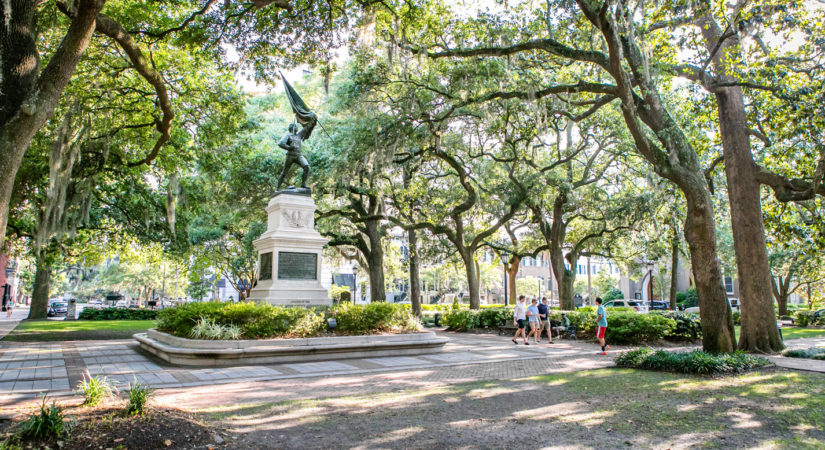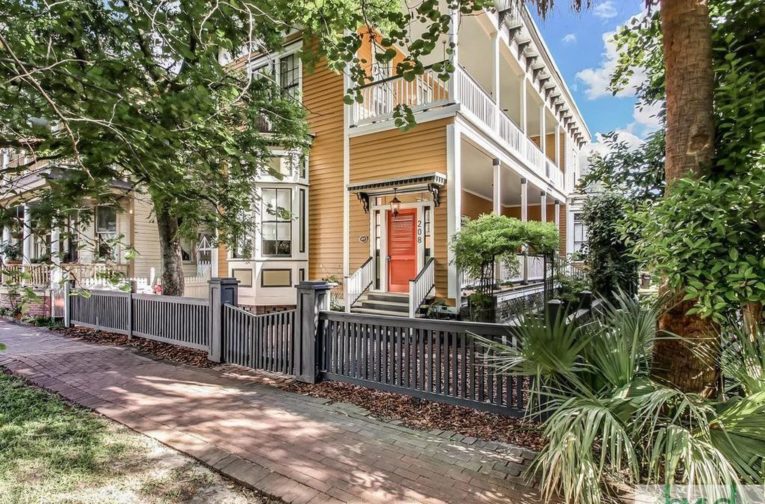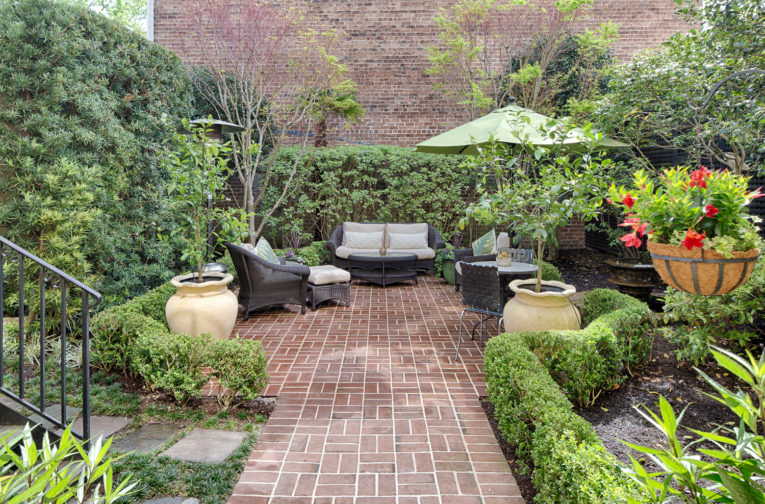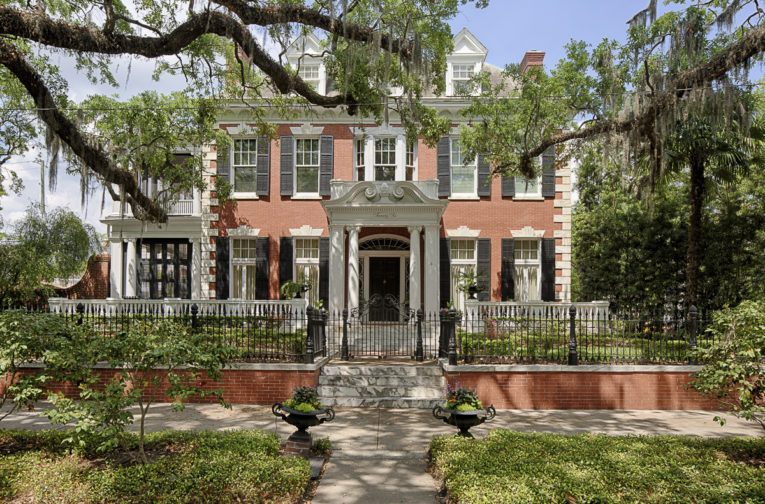One of Savannah’s “monumental” squares anchoring Bull Street, Madison Square also has the distinction of being one of Georgia’s most historic places.
This scenic square serves as an excellent representation of the genius of Gen. James Oglethorpe’s original Savannah city plan, with a vibrant mix of residences, houses of worship, hotels and civic buildings, along with work by some of the region’s greatest architects.
Witnessing Wartime
While the square is named after President James Madison, in typical Savannah fashion, the monument within Madison Square honors someone other than the square’s namesake. In this case, an 1888 statue by New York sculptor Alexander Doyle memorializes Sgt. William Jasper, a legendary hero of the Revolutionary War.
Jasper risked his life to save his unit’s flag while defending Charleston, S.C. against the British in 1776. A few years later, in the 1779 Battle of Savannah, he was killed trying to retake Savannah from British forces.
The marker at the northwest corner of Madison Square commemorates what’s believed to be the southern edge of the British defenses during the battle. However, Madison Square is probably best-known for its Civil War history. The circa-1841 Sorrel-Weed House on the north side of the square was once home to Gilbert Moxley Sorrel, the Confederacy’s youngest general at the age of 26.
Most importantly, the Green-Meldrim House on the square’s west side was the site of Gen. William T. Sherman’s headquarters from December of 1864 through February of 1865, following the conclusion of his famous March to the Sea through Georgia. The building currently serves as the rectory for St. John’s Church next door.
The Green-Meldrim House originally began as the residence of Charles Green, an English cotton merchant. When built in 1850, this Gothic Revival masterpiece was considered the most expensive home in Savannah.
Architectural Wonders
Built in 1853, St. John’s Church was designed by John Norris, arguably the architect with the greatest legacy in Savannah. When the congregation was founded in 1841, its first rector was Stephen Elliott, who would become the first bishop of the Episcopal Diocese of Georgia.
Two other premier Savannah architects are featured around Madison Square. The Hyman Witcover-designed Scottish Rite Temple dates from 1926 and features a plethora of colorful Masonic symbolism. The popular Gryphon cafe and tea room now occupies the ground floor of this iconic building, which is featured in the opening scene of the movie “Forrest Gump,” when the white feather drifts past the distinctive rooftop of this historic structure.
Across the street stands the former Savannah Volunteer Guards Armory, designed by William Gibbons Preston. This 1892 Romanesque Revival building is now Poetter Hall, the flagship building of the Savannah College of Art and Design. SCAD renovated this handsome brick building overlooking the square in 1979. A lesser-known gem near the square is the 1897 Georgia Hussars building, one of Savannah’s few examples of Moorish architecture, which is now mostly retail space.
Without a doubt, the most legendary architectural achievement near Madison Square is one that is no longer there. The ornate 300-room Hotel DeSoto occupied the site from 1899 to 1966 and hosted five U.S. presidents and numerous Hollywood stars over the years. Sadly, this one-of-a-kind building, another masterwork by William Gibbons Preston, was demolished at the height of the “urban renewal” craze, in part due to its lack of air conditioning. The building that is currently located on the site, the DeSoto Savannah, was completed in 1968 as a Hilton property and underwent a multi-million dollar modernization in 2017.
Madison Square stands apart as one of Savannah’s most fascinating and beautiful public spaces. When buying and selling property in Savannah’s National Historic Landmark District, be sure to work with an experienced real estate professional who understands what makes Savannah’s historic properties so unique, special and valuable.
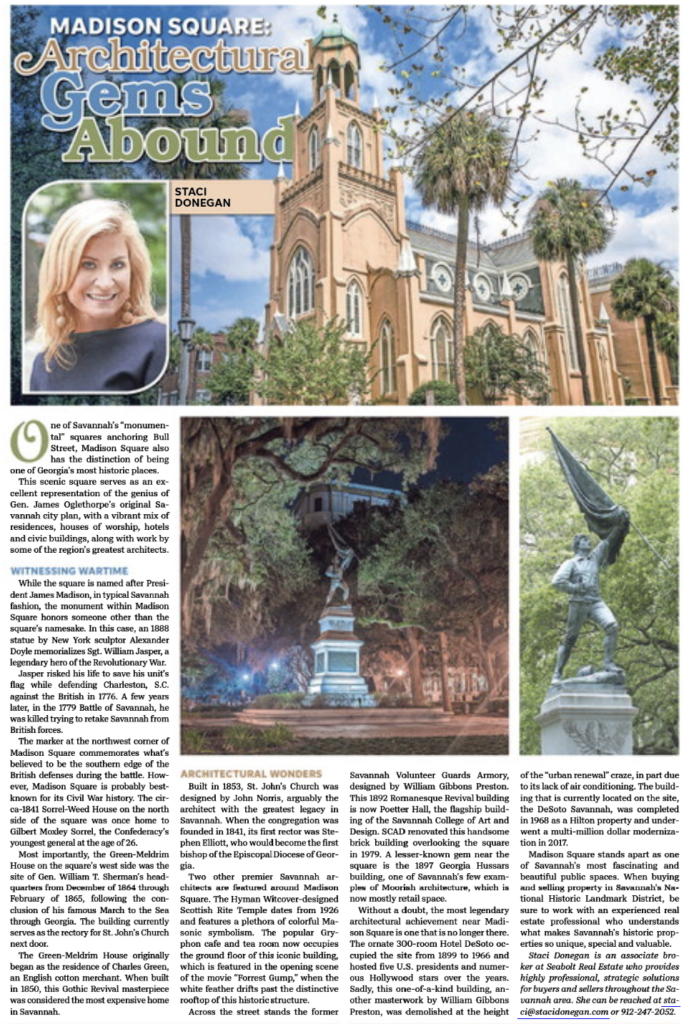
*Header Image Photo Credit: Casey Jones*

